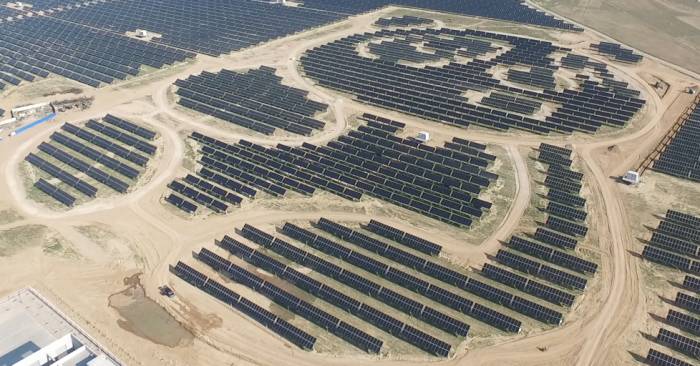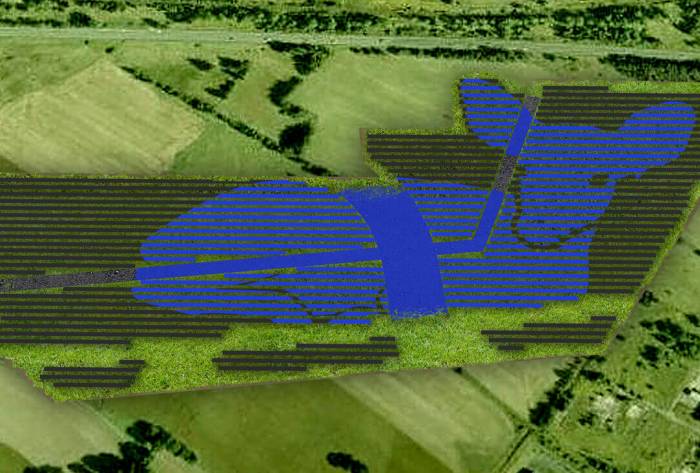A 10MW solar farm to be built in Jelenia Góra will have panels arranged in the shape of a city symbol – a deer.
Jelenia Góra, also known as Deer Mountain, is a city with a population of around 85,000 located in Lower Silesia, south-western Poland. Legend has it that Prince Bolesław Krzywousty pursued an injured deer into the area and was so taken by the region’s beauty that he built a fortified castle there in 1108, thus establishing Jelenia Góra.
Project developer Polski Solar says the PV plant will generate enough clean electricity to meet the needs of 4,500 local households. To create the shape of a deer, blue multicrystalline (polycrystalline) solar panels will be set among black monocrystalline modules.
The facility will be built as part of the Jeleniogórski Renewable Energy Cluster.
“Renewable energy clusters are the future of the energy sector. They are of great importance in terms of improving the air quality in the Jelenia Góra Valley, but also due to the reduction of the county’s operating costs,” said (translated) Jacek Ryński, vice president of the Polish Solar Holding Foundation.
Apparently the city is plagued by smog during the winter months, largely the result of coal-fired heating.
It’s not the first solar farm in the world to have panels arranged in the shape of an animal (excluding Mickey Mouse) – one we reported on previously was the Panda solar plant in Datong, Shanxi province, China.

Image: Panda Green Energy Group Limited
The panda didn’t quite look like the artist’s impression, so perhaps Polski Solar may do better.
Poland And PV
The uptake of solar panels has been rather sluggish in Poland.
Around 101 MW of new PV systems were connected to the grid in 2016, with nearly three quarters of this capacity being residential and commercial systems. By May of last year, total cumulative solar capacity in the country had reached nearly 200MW.
Coal is still king of the power sector of Poland – and also the largest source of greenhouse gas emissions.
The country has a renewable energy target of 15% by 2020, but there have been doubts as to whether that will be achieved. In a report published last March, Ecofys projected a range between 10.0% and 13.8% overall renewable energy share in 2020.
However, a recently approved scheme may help solar power and other forms of renewable energy along. In December 2017, the European Commission approved granting of State support to producers of electricity from renewable sources.
Small installations with a capacity of up to 500kW will be eligible to receive a feed-in tariff and larger installations will receive a premium on top of the market price of electricity. The scheme will be financed by a surcharge on electricity consumers and there will be some breaks for large energy consumers.
“The Polish support scheme will increase the share of green energy in Poland’s energy mix and help the country’s energy transition,” said Commissioner Margrethe Vestager. “It will also preserve the global competitiveness of companies that are heavily energy dependent.”
The scheme has a budget of around €9.4 billion (around AUD $14.41 billion).


 RSS - Posts
RSS - Posts



I understood that monocrystalline and polycrystalline panels could not be mixed, or used in the same system.
Could this please be clarified?
Also, where is the pikkie of the German-Japanese hybrid system – the Miki Maus one?
If dissimilar panels are connected to the same MPPT on an inverter, the performance of all the panels will be pulled down to that of the weakest. This means it’s a bad idea to mix and match panels for no reason. So either the two different types of panels either won’t be attached to the same MPPTs or they are willing to take a small hit to their system’s output in order to have a pretty picture.
The not very Mickey Mouse looking one is near Florida Disneyland.
https://ohmy.disney.com/wp-content/uploads/2016/04/Mickey-Mouse-Solar-Facility-Walt-Disney-World.jpg
I dunno – looks pretty Mickey Mouse to me.
Or, are those panel circles, like crop circles, with the big one for recharging the mother ship, and the two little ones for recharging the sister ships, when they visit?